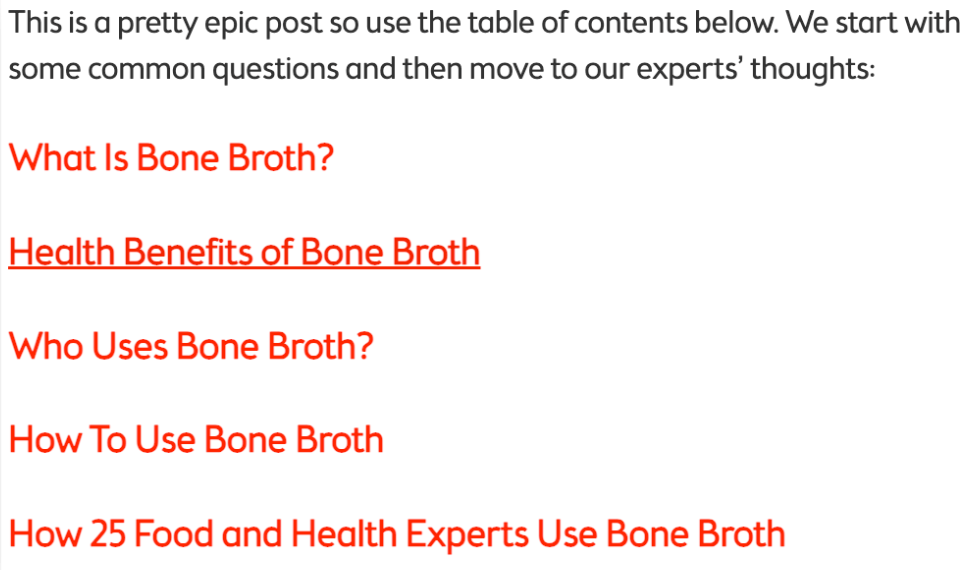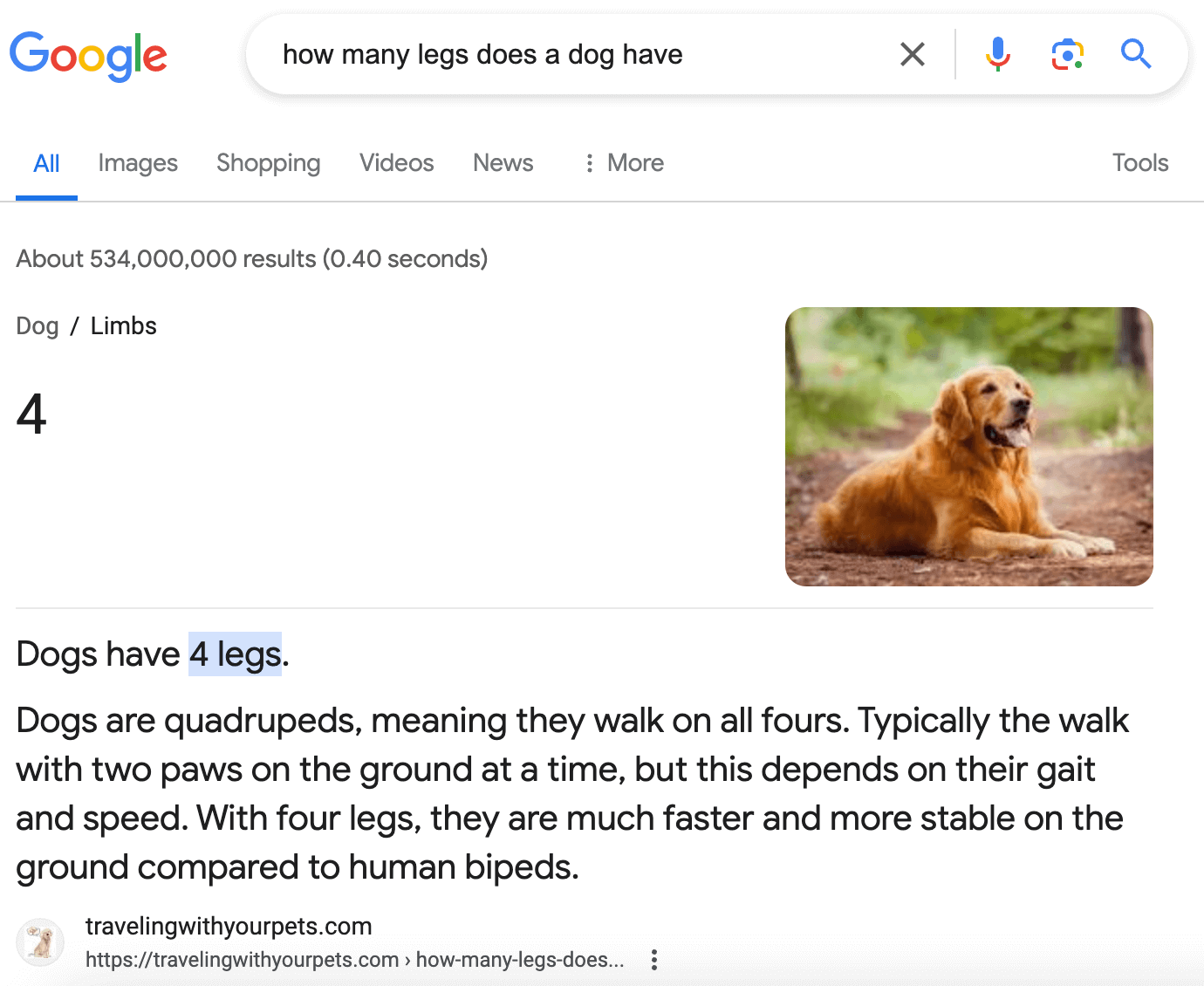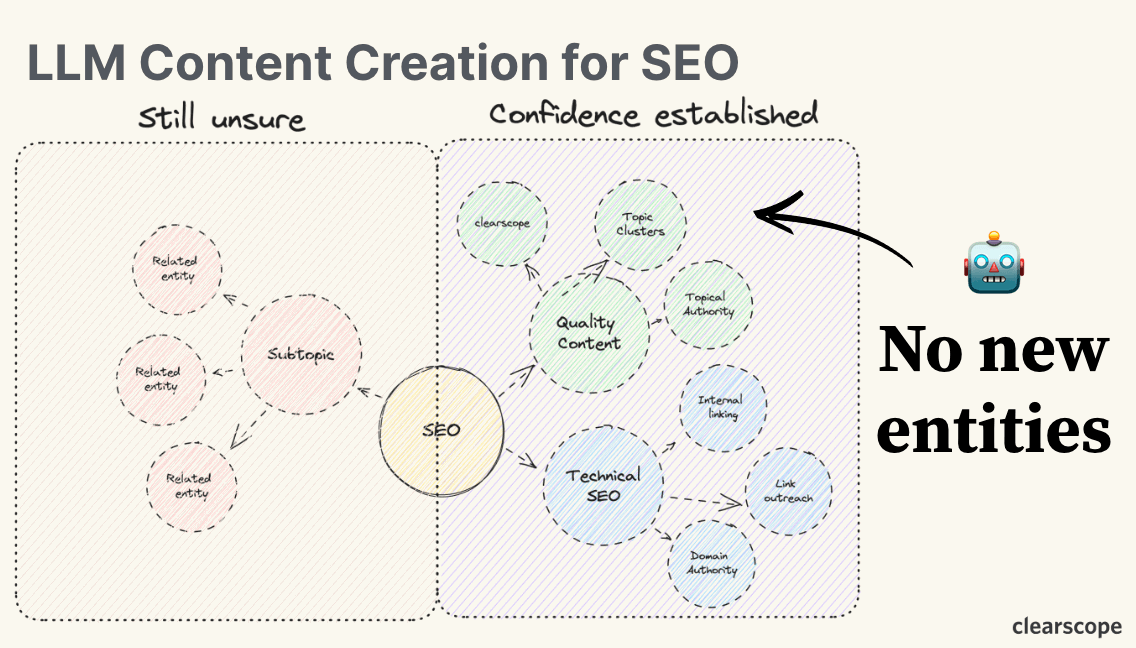Why Ranch-Style SEO Is Your Future-Proof Content Strategy
Topic: Strategy
Published:
Written by: Bernard Huang
It’s time to unlearn what you know about SEO:
The era of keyword dependence and Skyscraper content is obsolete.
Technical SEO has become a commodity.
And backlinks have lost the blast-off potential they once had.
As we move into 2025 and beyond, "Ranch-Style SEO" is poised to take center stage, reshaping how we approach content development in the era of generative AI and more frequent algorithm updates.
Ranch-Style SEO flips the traditional Skyscraper Technique on its head.
Rather than aggregating content into one massive pillar page, this method emphasizes the disaggregation of content into precise, digestible pieces that strategically align with the user's search journey.
In this article, you’ll get a deep dive into why Ranch-Style SEO is the future-proof strategy you need. You’ll learn:
What Ranch-Style SEO is and where the phrase comes from
Why Ranch-Style SEO is the ideal strategy for 99% of companies (even if they don’t know it yet)
The trajectory of Google’s’ algorithm and practical tips for aligning your content strategy accordingly
Prepare to unlearn old habits and embrace a breakthrough strategy that will set you up for long-term SEO success.
Ready? Let’s go.
First: What is “ranch-style” SEO anyway?
To understand Ranch-Style SEO, let's compare it to a familiar concept: the Skyscraper Technique.
In 2013, Brian Dean introduced the revolutionary Skyscraper Technique, which quickly became one of the most popular and successful SEO strategies ever. The Skyscraper Technique emphasized creating massive, all-encompassing content.

The Skyscraper Technique was introduced by Brian Dean and emphasized creating massive, all-encompassing content.
Ranch-Style SEO, on the other hand, emphasizes creating granular, targeted pieces of content that closely map to the user’s search journey.
So why do I call this particular strategy ranch-style?
Instead of constructing "tall towers" of content that extensively cover a topic from various perspectives (like the Skyscraper technique), opt for building a content ranch:
Spread high-quality content across numerous individual articles tailored to your user's search intent and each stage of their journey.
It’s time to leave the crowded city of Skyscrapers and start offering users targeted, perspective-driven education out on the open range.
Example: Kettle & Fire
In 2016, Kettle & Fire used the Skyscraper Technique for their article, "The Ultimate Guide to Bone Broth."


A typical keyword-laden table of contents: Traditional SEO emphasizes predictable who, what, when, where, and how keywords instead of nuanced search perspectives.
Ranch-Style SEO would approach this differently, breaking down the topic into smaller, more focused articles like:
The top 10 health benefits of bone broth
How to make bone broth at home
What 25 experts have to say about bone broth for health and wellness

Traditional SEO vs. Ranch-Style SEO
Traditional SEO relies heavily on keywords and search volume, while Ranch-Style SEO prioritizes topic relevance and search intent.
Instead of repackaging existing content (i.e., how most SEO content is made), Ranch-Style SEO emphasizes creating fresh, original content that does the following:
Conveys firsthand experience
Demonstrates subject matter expertise
Captures relevant search perspectives
Adds new information to Google's Knowledge Graph
3 key reasons why Ranch-Style SEO is the future of search content
As the digital landscape evolves, traditional SEO strategies are losing their effectiveness.
Generative AI tools like ChatGPT and Gemini (formerly Bard.ai) have made it easy to produce large amounts of low-quality content—and for free.
In response, Google has shifted its focus to content quality and user experience.
The Knowledge Graph, Google's relational database, plays a crucial role in organizing and presenting information in search results. And Ranch-Style SEO allows content creators to provide relevant information gain that AI tools cannot reproduce.
Here are the 3 key reasons why this strategy is the future of search, and I’ll cover each in depth below:
Ranch-style SEO is responsive to the shift from keyword-centric to topic-centric SEO
Ranch-style SEO mitigates the negative impacts of generative AI on the web
Ranch-style SEO partners with firsthand experience as a ranking factor
Reason 1: Shift from keyword-centric to topic-centric SEO
Since its inception in 1998, Google's mission has been to "organize the world's information and make it universally accessible and useful" (source).
Initially, Google focused more on technical aspects and backlinks rather than the quality of the content itself. However, the tide has shifted in recent years with Google increasingly emphasizing content quality and relevance.

We’ve seen an increasing frequency of content-specific Google algorithm updates over the past 10 years.
This change is evident in a series of significant content-focused algorithm updates:
Hummingbird (2013): This update marked the peak of keyword-focused strategies (i.e., Skyscraper content). Google rewarded content that was long, comprehensive, and rich in keywords. The idea was that "bigger is better."
RankBrain (2015): Introducing machine learning into the mix, this update began the decline of the Skyscraper content strategy. While Skyscraper articles performed well in terms of traditional keyword SEO, they often failed to provide a satisfying user experience, something Google wasn’t paying close attention to yet. Users prefer immediate answers rather than sifting through a table of contents. (Imagine that!)
E-E-A-T Update (2022): This update added "Experience" to the existing criteria of Expertise, Authority, and Trustworthiness (E-A-T). Google started to give more weight to content that offered credible, firsthand experience.
Helpful Content (2023): The 2023 updates aimed to present a variety of search intents on the Search Engine Results Page (SERP). The goal is to help users find the information they need more quickly, reinforcing the idea that "better is better." Length and keyword densities are non-factors. And Google has merged Helpful Content into how recent Core and Spam updates work.
The takeaway is clear: The days of SEO content being solely driven by target keywords are waning.
Instead, the focus has shifted to high-quality, relevant content that satisfies the user's search intent.
Traditional SEO was a numbers game—more links, more keywords, and more content increased your chances of ranking.
Ranch-Style SEO, on the other hand, prioritizes quality and relevance across your targeted topics, widely and thoroughly approaching them from a variety of angles and perspectives.
This allows you to target the actual search intent behind user queries in a higher-quality, human-first way. And we now know that Google rewards content that is not only of high quality, but also closely aligned with the user's specific search intent.
Such content is more likely to end the user's search journey satisfactorily and, as a result, earn higher rankings.
Reason 2: The impact of generative AI on content strategy
The double-edged sword of generative AI
Generative AI tools like ChatGPT and Gemini have enabled marketers to produce content at an unprecedented scale.
While this has its advantages, it also presents two significant challenges for SEO:
Content quality deterioration: The ease of generating content has led to a surge in low-quality, generic material (aka commodity content). Google has responded by refining its algorithm to prioritize content quality, primarily through updates like E-E-A-T, Helpful Content, and the recent March 2024 Core and Spam updates.
AI-generated content saturation: Generative AI excels at producing content for well-established topics, often outpacing human capabilities. This means that AI can quickly saturate the content landscape for topics with a high level of consensus (ie, consensus content), which cannibalizes rankings.
Ranch-style SEO can help you face these challenges head-on, but to understand why, let’s dig a little deeper.
Understanding Google's Knowledge Graph
To really understand how generative AI will influence SEO content development, you must first know how Google’s Knowledge Graph works.
The Knowledge Graph is a relational database that works by organizing data into interconnected entities and concepts (people, places, facts, things), which significantly improves the relevance and depth of information in Google Search results
For example, a search for [search engine optimization] will serve up a comprehensive panel of information including:
Best ways to optimize SEO
Purpose of SEO
Examples of SEO
SEO strategy
How to do SEO
The challenge of SERP similarity
When a topic reaches a high level of consensus, Google's SERP often shows "Featured Snippets," providing immediate answers, as in the comical example of [how many legs does a dog have] below.

While Featured Snippets are beneficial for users—because they receive immediate answers in the SERP with no clicks, and no time wasted with subsequent searches—it is increasingly difficult for SEO content creators to rank for those topics.
SERPs are dominated by established high-authority brands with tons of backlinks. But most of these search results contain the same information: copycat content.
The problem is, once a reader has read one article, they’ve effectively read them all.
The solution? Focus on generating "information gain" content.
Information gain: Your competitive advantage in the era of AI
To address the copycat content problem, in April 2020, Google filed a patent that, in short, should reward articles that bring new information to the table.
They call this idea information gain.
It refers to introducing new, relevant concepts or entities on the periphery of Google's Knowledge Graph. By focusing on these fringe areas, you can contribute unique insights with a better chance of ranking.
So instead of studying search engine results pages to outline articles, content marketers should be asking themselves, “What new information can I bring to the discussion?”
The Role of AI in Information Gain
While generative AI tools can produce content for well-established topics, they fail to generate information gain.
Their training data limits them to existing knowledge, making them ineffective in introducing new, unique insights.

AI tools are playing in a closed information sandbox. They can’t contribute anything new; they only repackage what already exists.
Practical strategies for information gain content
Whether you leverage generative AI tech to create content or not, Google is cracking down on generic, low-value-add content in favor of high-quality information gain content.
This is your challenge as a content creator. But it’s also your opportunity.
To create content that stands out, consider the following approaches:
Zero search volume topics: Focus on topics not yet trending but relevant to your industry's future or target user’s search journey. These queries often won't appear in traditional SEO tools, but tackling them can offer unique insights that neither competitors nor AI can replicate.
Leverage video content: Video is high-effort and difficult to replicate, which gives you a competitive edge.
Proprietary research: Leverage your data and analysis to offer unique perspectives. Again, it is difficult for competitors to replicate.
Human-directed AI: Use AI tools to support your content creation initiatives, but always double-check output for accuracy and truthfulness. Add your unique insights to ensure the content provides relevant information gain.
By focusing on information gain and leveraging unique insights with a Ranch-Style SEO approach, you can create content that ranks and provides genuine value to your audience.
Reason 3: Firsthand experience as a ranking factor
As skepticism toward search engine results grows, people are increasingly turning to alternatives for unbiased information:
We visit forum platforms like Reddit and Quora
We interact with peers in "Dark social" spaces, like Discord, Slack channels, and other private forums
More of us are using AI technologies for quick answers
This migration poses a challenge for Google as users begin to favor alternative platforms.
Google's response: Elevating content quality
To regain user trust, Google has recalibrated its algorithm to prioritize high-quality content over generic, low-value material.
A key component of this strategy involves using Manual Search Evaluators—individuals who manually review web pages to assess their quality.
The role of manual search evaluators
These evaluators play a crucial role in training Google's algorithm. But most folks have no clue.
Evaluators assess web pages based on the E-E-A-T guidelines, with a recent emphasis on the Experience part of that equation.
Their manual evaluations help the algorithm understand qualitative or subjective aspects of content that it might not otherwise be able to gauge.
Optimizing content for experience: Practical steps
When crafting content, consider that a human evaluator might scrutinize it.
(Better yet and even more foundational: Consider that a person will actually be reading it—every word.)
Your objective should be to demonstrate subject matter expertise and provide the user with the right tools or valuable, relevant information they need to resolve the intent behind their query.
Here are some tactical ways to do that:
Authorship: Establish your credentials by including an authorship box that outlines your expertise and experience in the subject matter.
Legitimacy: Bolster the credibility of your content by incorporating proprietary data and original analysis.
Custom media assets: Use custom visuals like images, graphics, and videos over generic stock assets to differentiate your content.
Above-the-fold experience: You only have one above-the-fold experience. Use it to immediately signal your expertise and capture the reader's attention.
Your creativity is the limit here—these are by no means the only ways to convey experience.
By focusing on these elements, you cater to the algorithm's evolving preferences and create a more enriching and trustworthy experience for the user.
Caveats: Limitations of this approach
While Ranch-Style SEO offers a robust strategy for long-form content, it's important to note that it may be less effective for shorter content types.
Specifically, this approach is less applicable to:
E-commerce product listing pages (PLPs)
E-commerce category pages
SaaS product pages
Local SEO service pages
Ranch-Style SEO is not designed to optimize for navigational or branded searches, such as queries for [Amazon customer service].
Embrace Ranch-Style SEO for a competitive edge
Let's take a step back and look at what we've covered so far:
Topics evolve. Unlike traditional SEO techniques that rely on backward-looking keyword research tools, Ranch-Style SEO keeps you at the forefront.
Subject matter expertise is critical. High-quality, relevant, and novel insights are necessary to contribute “information gain” content that expands Google’s Knowledge Graph on your chosen topic.
Topics are replacing keywords. Focus on overall user satisfaction by tailoring content to the different stages of a topic's life cycle. This approach makes keywords less indispensable.
Through the years, the landscape of SEO has shifted from a primarily technical endeavor to a content-focused, creative process that places user satisfaction at the center.
Today's content management systems (CMSs) handle most of the technical aspects, leaving content relevance and search intent as the primary driving factors for SEO success.
As SEO practitioners, we must adapt our roles to align more closely with content strategy and customer insights—rather than relying solely on keyword data and competitor analysis.
Those of us who prioritize creating valuable, relevant information will have the upper hand in this new landscape.
Embracing Ranch-Style SEO not only offers opportunities for SEO success, but also provides your audience with engaging, relevant, and high-quality content they'll appreciate.
If you need help navigating this transition, feel free to reach out to Clearscope for a consultation. Our experts are ready to guide you into this new era of SEO.
Now, it's time to put these insights into action. For next steps, check out How to implement Ranch-Style SEO: 7 Successful frameworks.
Remember, in the race to rank, content isn't just king. It's the whole game.
Best Practices for Updating Website Content (2023 Guide)
Our post covers Clearscope's five-step process for updating website content. Our best practices save time and help teams make updates that drive results.
Read moreHow to Implement Ranch-Style SEO: 7 Successful Frameworks
Learn 7 successful content frameworks for Ranch-Style SEO, the future-proof, perspective-driven SEO strategy that’ll take your site into the next era of search.
Read moreInformation Gain in SEO: The Guide to Convincing Yourself, Team, and Clients to Rethink Current Strategies
What is information gain? Why is everyone talking about it? This is the guide you need to persuade yourself, your team, and your clients to reassess your current strategy to include info gain in your content.
Read more